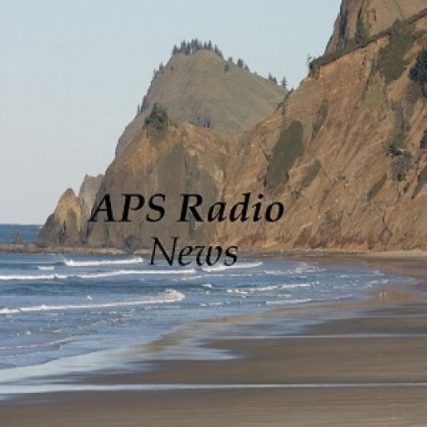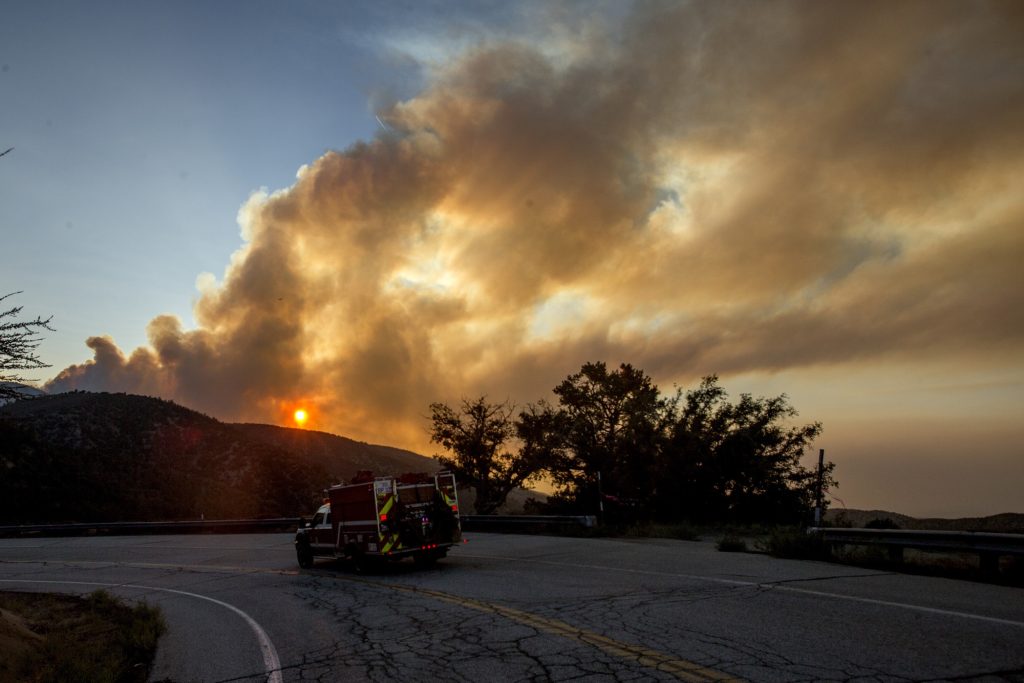By Grace Toohey
Los Angeles Times
(Los Angeles Times) — In a matter of hours, the Mountain fire charged rapidly across the Santa Susana Mountains and into nearby foothill neighborhoods, forcing widespread evacuations and demanding intense firefights from crews showered in red-hot embers.
Even as hundreds of firefighters around the region immediately kicked into action, the wind-driven blaze grew in unpredictable and dangerous ways, razing down homes, tearing through orchards and threatening thousands living in and around Camarillo, Moorpark and Santa Paula.
But officials made an early decision that would pay off: by prioritizing life-saving missions over property protection, no one died in the otherwise devastating wildfire. Only a few minor injuries were reported.
But not everything went off without a hitch. About five hours after the fire ignited near Somis around 9 a.m. on Nov. 6, some firefighters hit a snag in their response efforts.
“We are having some water issues up here where we’ve got low water pressure,” one firefighter could be heard saying in recordings of radio traffic that day. He asked command staff to check with the water providers and sort out any problems.
Then, hours later in the hills around Camarillo, Santa Barbara County Fire Capt. Hugh Montgomery — responding to Ventura County’s call for aid — said that that his engine had hit a roadblock after successfully salvaging about a dozen burning homes.
“We were inside of a structure fire and starting to make good headway when the hydrants went dry,” he said.
That evening at a news conference, Ventura County Fire Capt. Trevor Johnson addressed a question about water issues, saying that water availability remained a challenge, and a dangerous one.
“Just to locate fire hydrants when the water system is failing — everything is dangerous out there,” Johnson said.
Reports about water pressure issues and dry hydrants splashed across the evening news that night with images of smoldering homes in the background.
Specifics on the the extent of the issues weren’t immediately available, but two water pumps in the Camarillo foothills — the area hit hardest by fire losses — became inactive during the firefight, halting or slowing the process to refill hillside water tanks that fuel high-elevation fire hydrants, officials confirmed this week. One pump was completely destroyed in the blaze while another lost power during Southern California Edison’s planned electricity shutoffs, and it took hours to bring it back online with a generator, according to officials at the Calleguas Municipal Water District.
However, water and firefighting authorities maintain the disruptions are expected and planned for during major wildfires, asserting that it simply shifts firefighting operations. They were adamant that water remained available at other sources nearby.
“Did water run out? Yes,” Ventura County Fire Chief Dustin Gardner said at a community meeting this week. “We had adequate firefighting water for a long time and [firefighters] used it, and then when those hydrants — on the west side or in the (Camarillo) Estates — wherever they went dry, firefighters adjust to that. … We’re used to that. … The fact is we never quit fighting fire.”
It’s still unclear exactly how widespread the water disruptions were, if they could have been avoided or if any more homes could have been saved with uninterrupted water flow, given the erratic inferno that was feeding on parched vegetation and exploding amid hurricane-force winds. Gardner said all that will be part of a review of the Mountain fire. In total, more than 240 structures, many of which were primary residences, have been confirmed destroyed, another 127 damaged. The almost 20,000-acre fire was 91% contained Friday.
“If you think of the hundreds of firefighters and the hundreds of fire trucks we had in the (Camarillo) Heights and Estates, every one of them was hooked up to a hydrant at one point and they were flowing a lot of water and those waters are held in tanks — so those tanks are going to lower,” Gardner said. “I know we suffered great damage, but thousands of homes were saved.”
Even in the best of circumstances, this wildfire was extremely volatile, putting firefighters on defense as embers jumped up to two miles ahead of the main fire and intense winds pushed streams of water sideways and grounded some retardant-dropping aircraft, according to Ventura County Fire Deputy Chief Chad Cook.
“Gusting over 80 mph is something that does structural damage to homes,” Cook said. “You add the element of fire to the wind, you have a different animal — you have an animal that is not controllable.”
Still, residents in the area have continued to ask about the water supply issues, especially given that the National Weather Service had issued dire alerts about fire-friendly conditions in the area and Southern California Edison warned that shutoffs were likely.
“At some point in time, somebody didn’t have water and that’s not good in a fire situation for all the obvious reasons — from safety on to saving a house,” Steve Bennett, a state Assembly member representing Ventura, said. “It’s something that you just don’t want to have when these fires break out.”
The water pump issue is a problem that has haunted Bennett since the 2017 Thomas fire, when it took Ventura officials hours to get pumps on backup generators so water could resume flowing to fire hydrants. After getting few answers about what occurred then, Bennett sued, but said the details he was later provided were still inadequate. He doesn’t want that to play out again.
“The thing that we need to investigate… is to make sure we don’t run out of water any sooner than we have to,” Bennett said. “During a red flag [warning], you should fill all your tanks in advance. … Every place should have a generator that can handle what to do when the power goes out.”
It’s not immediately clear exactly what preparations each local water provider took before the Mountain fire, but only two experienced water supply issues during the firefight, according to Daniel Cohen, the emergency response coordinator for Calleguas Municipal Water District, which distributes water from the State Water Project to local providers.
Crestview Mutual Water Company had the pump that lost power because of the safety shutoffs. Cohen said electricity was cut to the pump at 2 p.m. and did not get a generator to restore operation until 11 p.m. the first day of the fire.
Crestview did not respond to questions for more details about the outage or its preparations, but according to its website, it operates three wells providing water to 625 customers in the Camarillo area. Its service area includes some of the worst-hit streets from the fire, including Cerro Crest and Estaban drives, where more than 20 homes were destroyed, according to the county’s preliminary map of damaged and destroyed structures and one of the water suppliers’ footprint.
Pleasant Valley Mutual Water Company had the pump station that was destroyed by fire. In an undated statement after the fire, the company explained that “one of the pumping stations that fill the water tanks for this zone was destroyed in the Mountain Fire, and the other station lost power.”
The water company said it installed a portable generator for that second pump, but it wasn’t clear how long that took and it did not respond to further questions from The Times.
However, the vice president of its board, Jay Dunlap, said he understands that people are upset, but that it may be misdirected — at least for customers of Pleasant Valley Mutual. He said his neighbors need to realize that the water companies were all facing “a once-in-a-lifetime fire event” — though history has shown this area is in a corridor known for wildfires, with several major blazes occurring over the last few decades.
“It’s a hard situation, I understand that,” Dunlap said, his heart going out to all those who lost homes. “It wasn’t that we weren’t prepared, … we can’t stop Mother Nature from burning up the pump.”
Pleasant Valley’s customers also included some of the worst streets for fire damage, including West Highland Drive and Santa Cruz Way, where more than a dozen homes were destroyed on each street, according to the county and water district maps.
Ian Prichard, the deputy general manager at Calleguas Municipal Water District, said that Pleasant Valley Mutual’s system has redundancy — or a built-in work around — so another pump could refill their tanks, albeit slower, after the one pump station burned.
Prichard also explained that these hillside water tanks are only designed to support a community’s daily use as well as a large structure fire — one that might take three or four firetrucks. None are designed for a major fire blowing embers every which way that requires hundreds of firetrucks, he said.
“Even with electricity… it puts a lot of stress on that system; you draw down that tank faster than it can get refilled,” Prichard said. “Firefighters know this, they’ve been fighting wildland-urban interface fires for a long time.”
However, he was adamant that in this fire “there was still water available and firefighters knew that and responded accordingly.”
Many fire officials echoed that defense.
“In the higher elevations, there was minimal water pressure due to how many [trucks] were tapped into the system,” said Capt. Scott Safechuck, a spokesperson for Santa Barbara County Fire Department. “It’s part of the operations, …. we pivot to how we can get water.”
Prichard did, however, acknowledge that it is best practices for water providers to top off their water tanks, stage backup generators and prepare crews for contingency work during a red flag event or possible fire weather.
But there are no explicit requirements to do so.
While the California Public Utility Commission has recently required wireless service providers in high fire regions to ensure backup power for a minimum of 72 hours because of their vital role in emergency response, water providers don’t have such mandates. They are only required to have emergency response plans, which include measures for high fire danger and considerations about low pressure, which “may also include portable generators or other equipment necessary to maintain water system operations,” Terrie Prosper, a spokesperson for CPUC, said in a statement.
Bennett said he understands there are circumstances where water disruptions can’t be avoided, but he wants to ensure all possible steps were taken to minimize effects.
“We all have an interest to understand where we had problems and make sure … we don’t in the future,” Bennett said.
Los Angeles Times staff writers Clara Harter and Nathan Solis contributed to this report.
©2024 Los Angeles Times. Visit at latimes.com Distributed by Tribune Content Agency, LLC.


